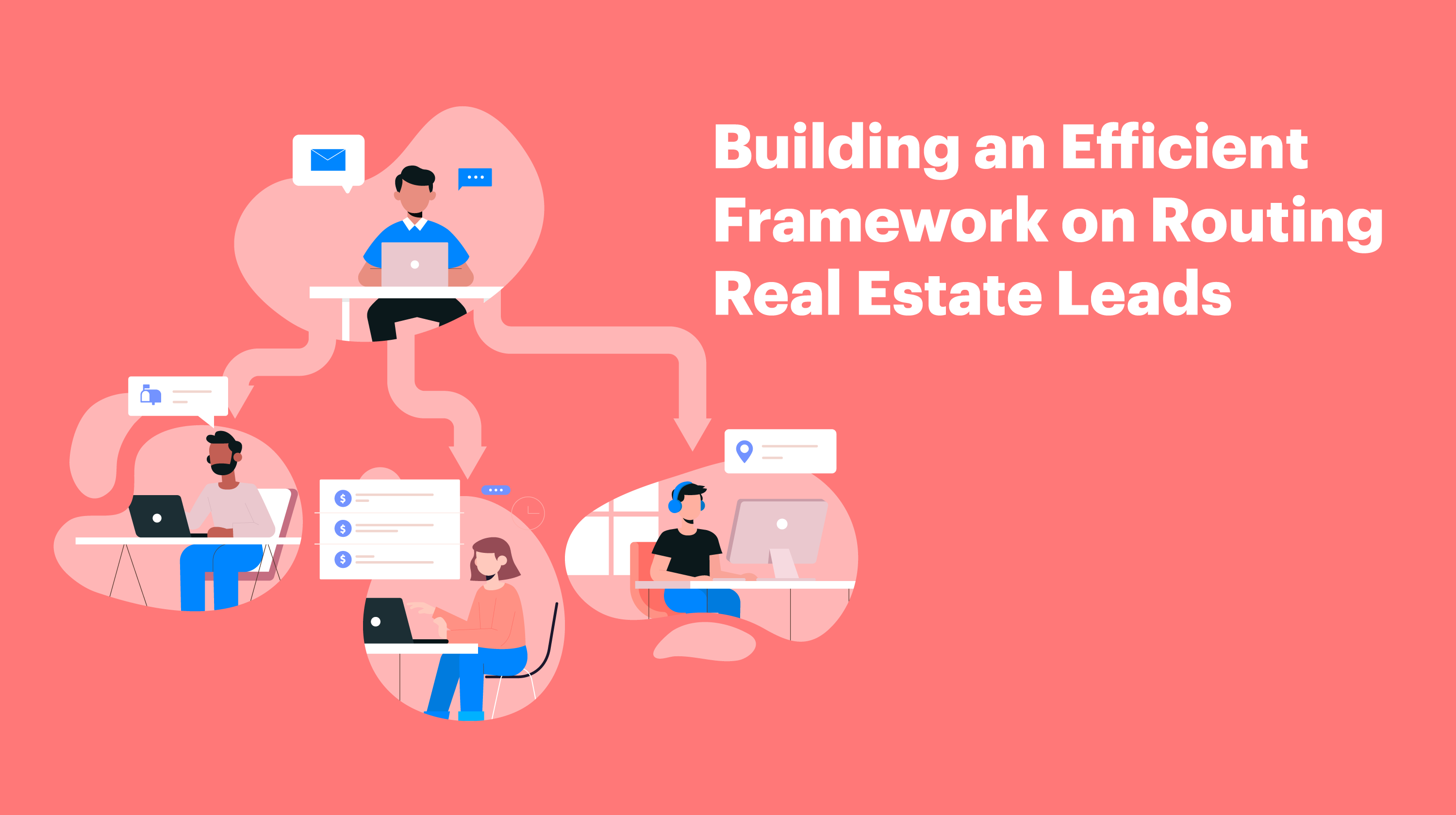
Want to create an efficient lead routing framework to maximize your conversion rates? Read this post on how you can create a lead routing philosophy based on the nature of your real estate leads.
Lead routing is one of the most challenging aspects of a real estate business. Leads come from a number of sources and differ with respect to their qualification level which makes it imperative to give them specialized follow up treatment.
While this challenge is fairly easy to understand, brokers and top agents always struggle to create an efficient lead routing workflow that enables the right follow up by the right person with respect to the lead acquisition source. If this problem resonates with you, you are not alone. We have seen many agents facing a similar problem after qualifying more than 500k leads.
In this post, we will present an efficient lead routing framework that allows you to identify key factors of lead routing.
To being with, we must list the 3 important aspects that are at the base of a successful lead routing strategy. These are:
- Attention. All leads must receive the right type of attention
- Specialization. Are assigned to the right agent.
- Communication. Receives the right type of follow up.
All three aspects are important to the major lead acquisition sources. However, the degree of importance for each factor is different for each lead source.
For example, Zillow leads should be attended as soon as they show up in the system. It is because Zillow leads are well qualified and must be grabbed as soon as possible. In other words, attention for Zillow leads is of paramount importance. But that does not apply for Facebook or Google leads since these leads are unlikely to know how their dream home looks like.
On the other hand, a Google lead might need a highly specialized follow up compared to leads acquired from Zillow or Facebook. It is because a lead coming from Google CPC can search with respect to price, features, neighborhood, and many other things. Such leads must go to the right agents who are familiar with the neighborhood or specialized according to the property budget.
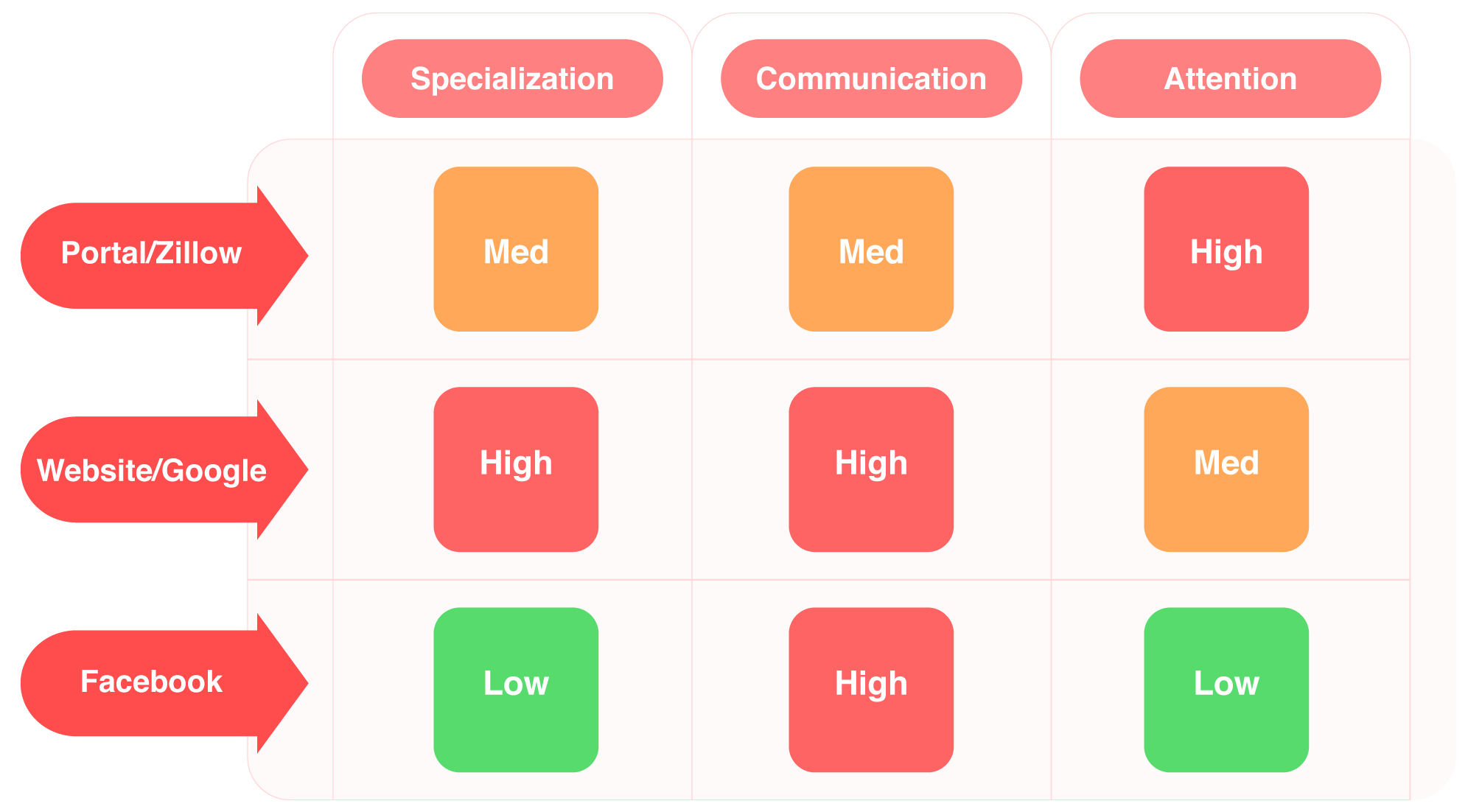
The 3 aspects of routing vary with regards to the lead acquisition source. However, that is not enough to create a lead routing framework. We must point out the attributes of our real estate leads and to make sure they go to the right agent, receive the right type of follow up, and put through the right routing sequence.
In the end, we will map the 3 aspects of lead routing to the lead sources on a granular scale using these lead attributes. Let’s point out the lead attributes first.
Breaking down the three major aspects of lead routing framework
Specialization. Specialization in lead routing is sending the right lead to the right agent. Here you can route the leads with respect to 4 factors as listed below.
- Location or Zip Code: Buyers coming from search engines often send zip code specific inquiries, making it easier to assign a specialized agent.
- Property or MLS Number: A lot of buyers send property specific inquiries too. You can map the zip code and assign the right agent to qualify the lead.
- Price: Routing rule should also consider high end vs low end customers which can be determined by their budget.
- Type: Lead type can be buyer or seller lead and the routing rule should consider that to send it to the right agent.
Communication. A total of 4 lead attributes define the follow up communication specified for individual leads. Leads that are mid/ upper funnel require frequent communication to qualify them.
- Source: A Lead from Google looking to buy a property is different from a lead with an open home request. The source defines what follow up messages or emails be sent.
- Completeness: A lot of leads do not provide emails, making it difficult to run drip campaigns. These leads must be adequately qualified by other modes of communication.
- Type: Lead type can be buyer or seller lead and the routing rule should consider that to send it to the right agent.
- Property or Location: Neighbourhood specific listings or news always generate the best response rate from buyers and sellers.
Attention. Sequencing in lead routing is important as it ensures attention to all the leads along with fair distribution among agents.
- Round Robin: Lead is assigned to one agent and then to the next one, given that it is not claimed within a specified time by the first agent. Round robin ensures a fair division of leads but does not guarantee the best speed to lead.
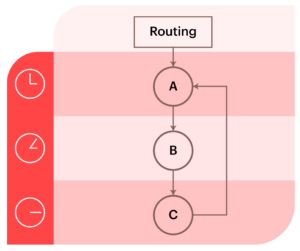
- First to Claim: Here the lead is sent to all the agents at once. The one who claims it first is the one to keep it. First to claim ensures speed to lead but does not guarantee fair distribution.
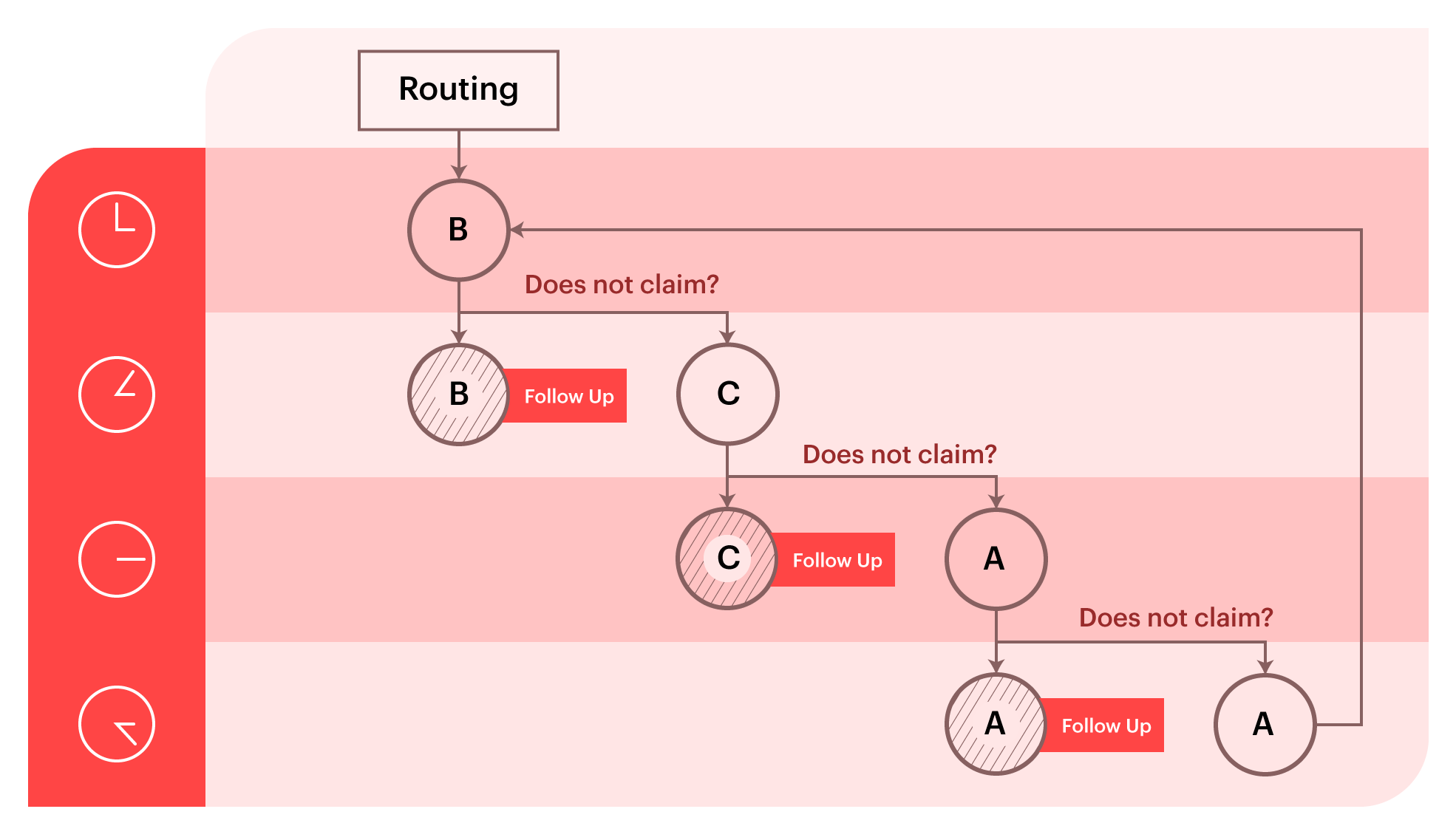
- Round Robin + First to Claim (Broadcast): Lead is assigned to one of the many agents and then to the next one if it is not claimed within a specified time. For the next lead, it goes to any of the other agents but the first one.

Now that we have all the lead attributes and routing sequences explained, lets map
Mapping the three aspects of routing to the lead sources.
We can represent this in a tabular form and then derive our inference separately.
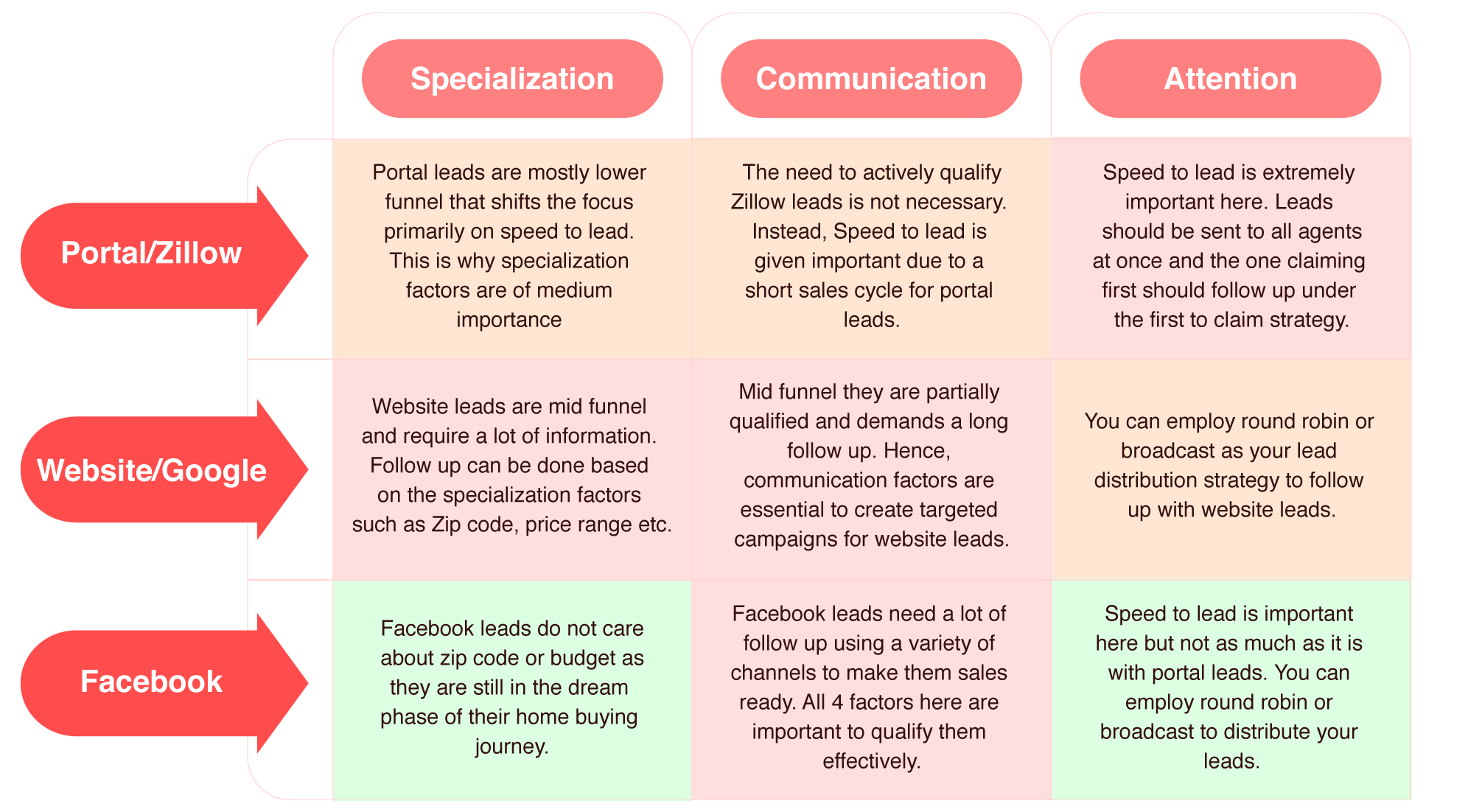
To conclude:
- Zillow leads require the highest degree of attentiveness. Impliment “first to claim” so that the lead is called or texted at the earliest. You can also use a third party lead conversion partner like Aiva to stay at top of Zillow leads.
- Leads generated from Google CPC campaigns must receive the right communication. They must be sent the right type of content to qualify them and make them transaction ready. Additionally, CPC leads must also go to a specialized agent as a lot of them could be neighborhood specific.
- Facebook leads are the most unqualified of all. Hence, all that matters with Facebook leads is that they receive the right type of communication and content.
 Aiva
Aiva
